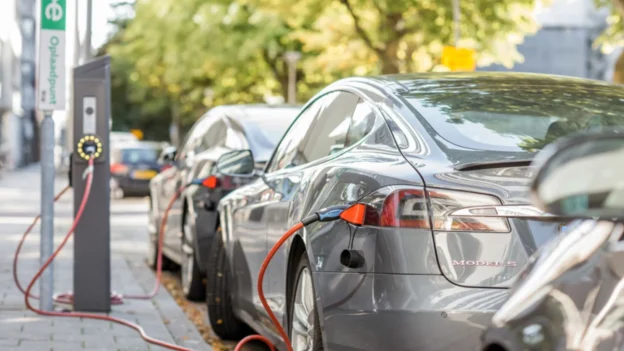The Indonesian government has set an ambitious goal: to have 2 million four-wheeled electric vehicles and 13 million two-wheeled electric vehicles on its roads by 2030. This objective is aimed at reducing polluting emissions and improving the country’s energy efficiency.
Transportation challenge in Indonesia
Indonesia expects significant energy savings of 29.79 million barrels of oil equivalent (boe) and a decrease of 7.23 million tons of CO₂ emitted by 2030. The initiative is part of the country’s efforts to mitigate the environmental impact of the transportation sector.
It is important to note that transportation in Indonesia consumes approximately one third of the country’s energy. With more than 11 million cars on the road, more than 35 million tons of CO₂ are generated annually, while trucks contribute more than 50 million tons, according to Dadan Kusdiana, secretary general of ESDM.
With the country’s economic development, the number of vehicles is expected to increase, making decarbonization of the sector essential to achieve the goal of zero net emissions by 2060.
Decarbonization strategies with electric vehicles
Further electrification of transportation will enable Indonesia to reduce its fossil fuel imports. The country is very interested in developing the entire supply chain of batteries for electric vehicles, taking advantage of its nickel resources.
Indonesia currently has nine facilities that process this mineral to produce nickel sulfate and cobalt, key materials for the manufacture of batteries for electric vehicles. electric vehicles. Of these facilities, four are already in operation, three are under construction and two are in the feasibility study phase.
On the other hand, the country is focusing on promoting the manufacture of battery precursors, cathodes, cells and batteries, since there are already electric charging and battery recycling industries. However, Dadan Kusdiana pointed out that a significant price gap persists between electric and conventional vehicles, which has led the government to offer tax incentives and subsidies for electric cars, hybrids and electric motorcycles.
Increase of charging stations in Indonesia
In this regard, Indonesia has earmarked US$455 million to subsidize the sale of electric motorcycles, covering the purchase of 800,000 new units and the conversion of 200,000 motorcycles with combustion engines. Likewise, to meet future demand, it is estimated that 32,000 charging stations will be needed by 2030. As of April, 1,566 stations were available, and the government plans to increase this number to 48,118 by the same date.
Finally, the ESDM has approved 204 nickel mining work plans for exploration and production, with production of 175.6 million tons of nickel ore in 2023.
To complement these efforts, the Indonesian government is considering implementing battery recycling policies to ensure a sustainable life cycle of the materials used in electric vehicles. This approach will mitigate environmental impact and reduce costs in the long term, promoting a circular economy in the country’s automotive industry.
Follow us on social networks and don’t miss any of our publications!
Inspenet.com YouTube LinkedIn Facebook Instagram X
Source: argusmedia
Photo: Shutterstock

